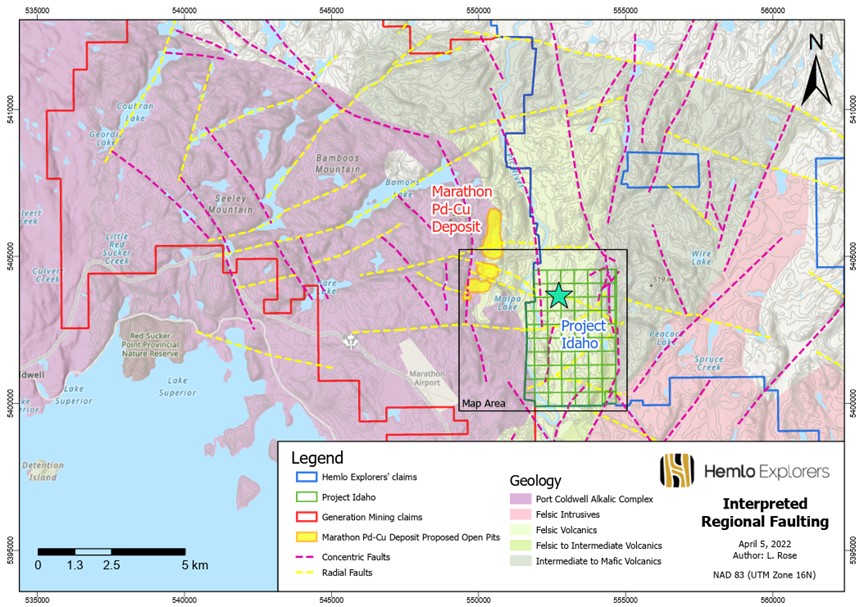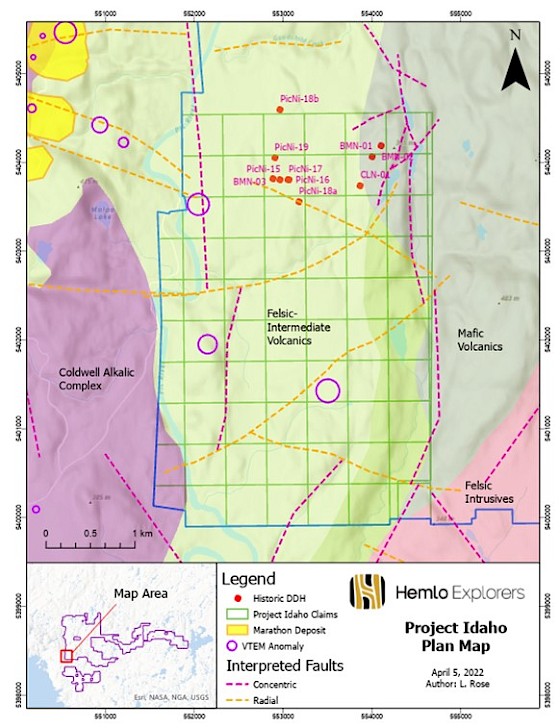Project Idaho
Project Idaho has been identified as a significant sulfide intersection on the western edge of the Pic Project. This intersection is 3 kms east of Generation Mining’s Marathon Pd-Cu project. This project, which is 1,385 hectares over 79 claims will be a major focus of the Company for the 2022 exploration season.
KEY HIGHLIGHTS:
- 3 kms east of Generation Mining’s Marathon Palladium-Copper (“Pd-Cu”) proposed open pit operation (“Marathon Deposit”) near Marathon, Ontario.
- The project area’s structural, geophysical and geological setting resembles that of Generation Mining’s Marathon deposit.
- An extensive array of intersecting radial and concentric faults cross-cut the project area, propagated from uplift and caldera collapse during the Coldwell Complex emplacement.
- Faulting geometry served as conduits for transport and concentration of Pd-Cu-bearing sulfide liquids carried within gabbroic magmas at the Marathon Deposit.
- Recent prospecting and historic data compilation has identified outcropping mafic intrusives similar to the Two Duck Lake gabbroic intrusives at the Marathon Deposit to the west.
- Historic ground magnetic and IP surveys show a linear north-south trending unit extending due south of a 2008 VTEM survey chargeability anomaly, which sits on an interpreted radial fault and is possibly an indication of sulfide mineralization.
- Silicified and sericitized rhyolite breccia zones corresponding with historic IP anomalies have been identified in the field, indicating an extensive alteration into the Archean basement.
- An historic 1985 drillhole (BMN-3) contains 10 intervals (totaling 117m) of pyrite mineralization ranging from 15 to 100%, the longest core length is 24 m with variable pyrite, minor pyrrhotite, sphalerite in feldspar porphyry breccia + silica-sericite alteration + multiple biotite lamprophyre dykes; this could be indicative of magma-country rock mixing, sulfide mineral dissolution and subsequent sulfide-liquid over-saturation with further magma pulses.

